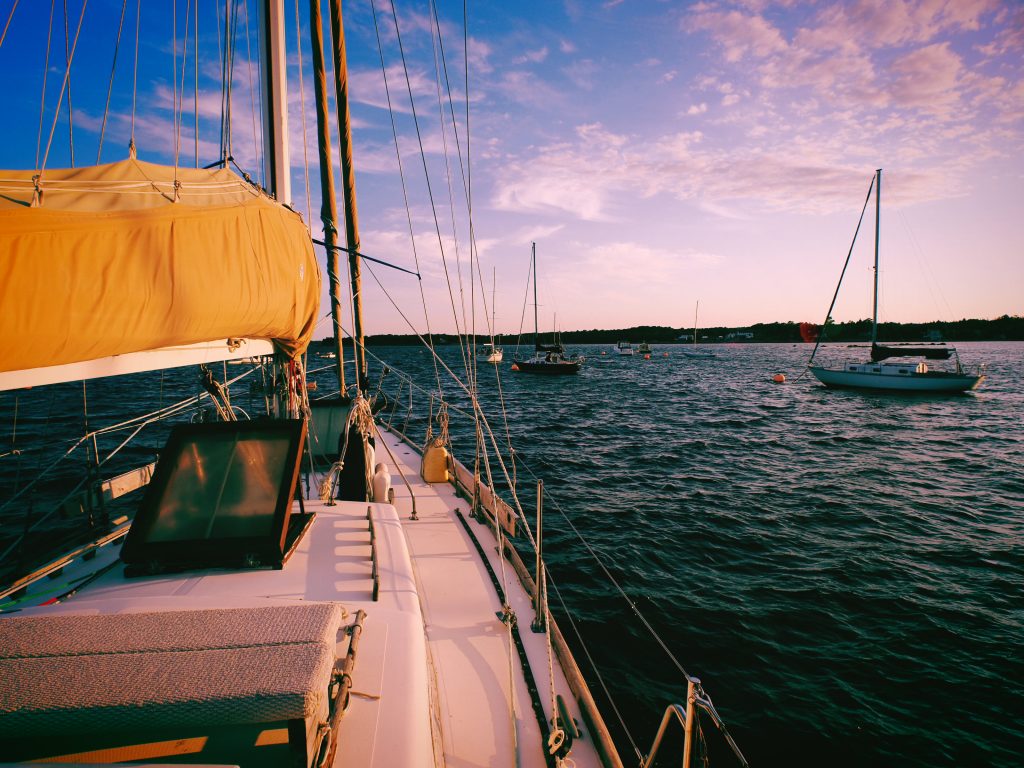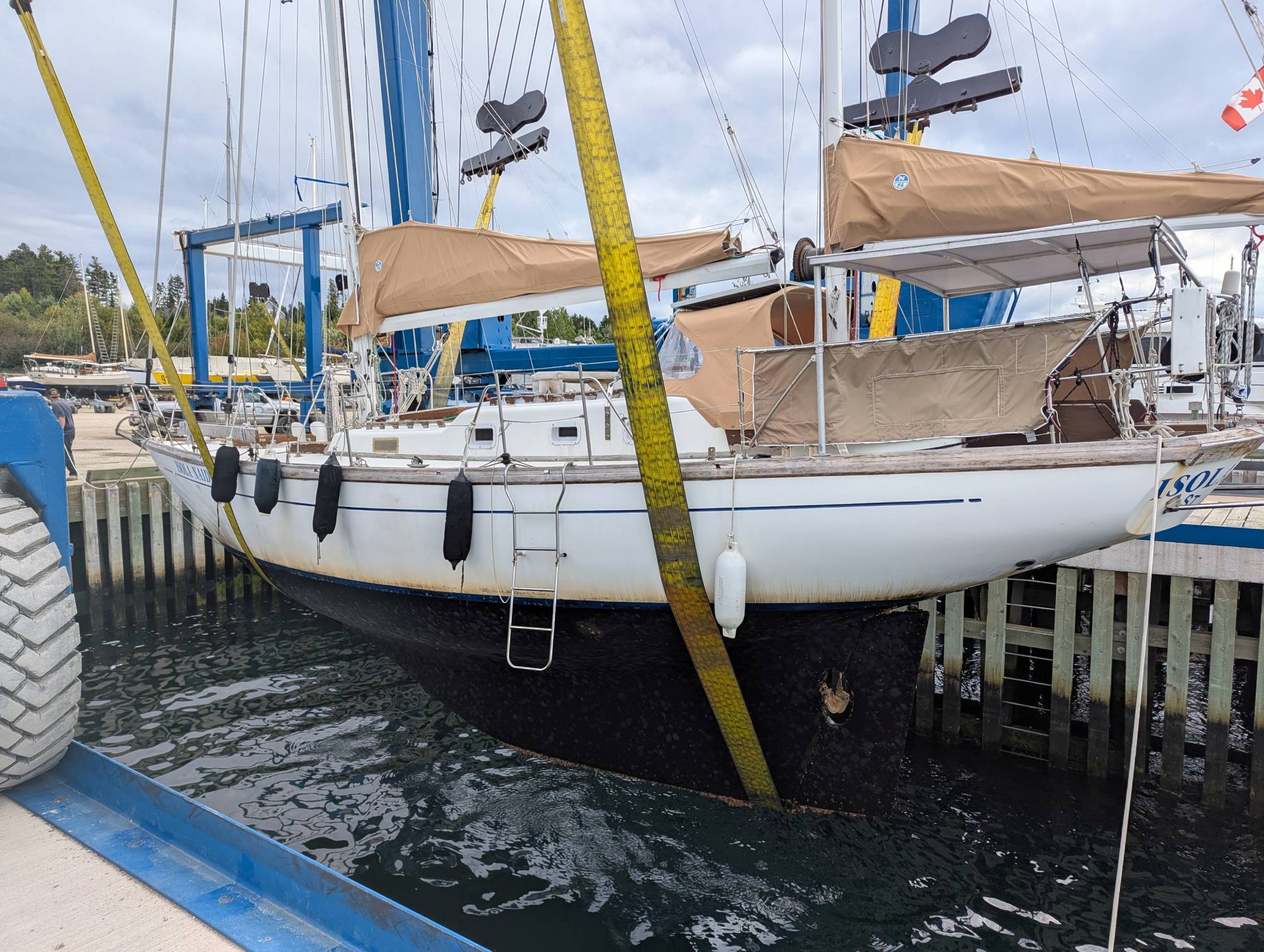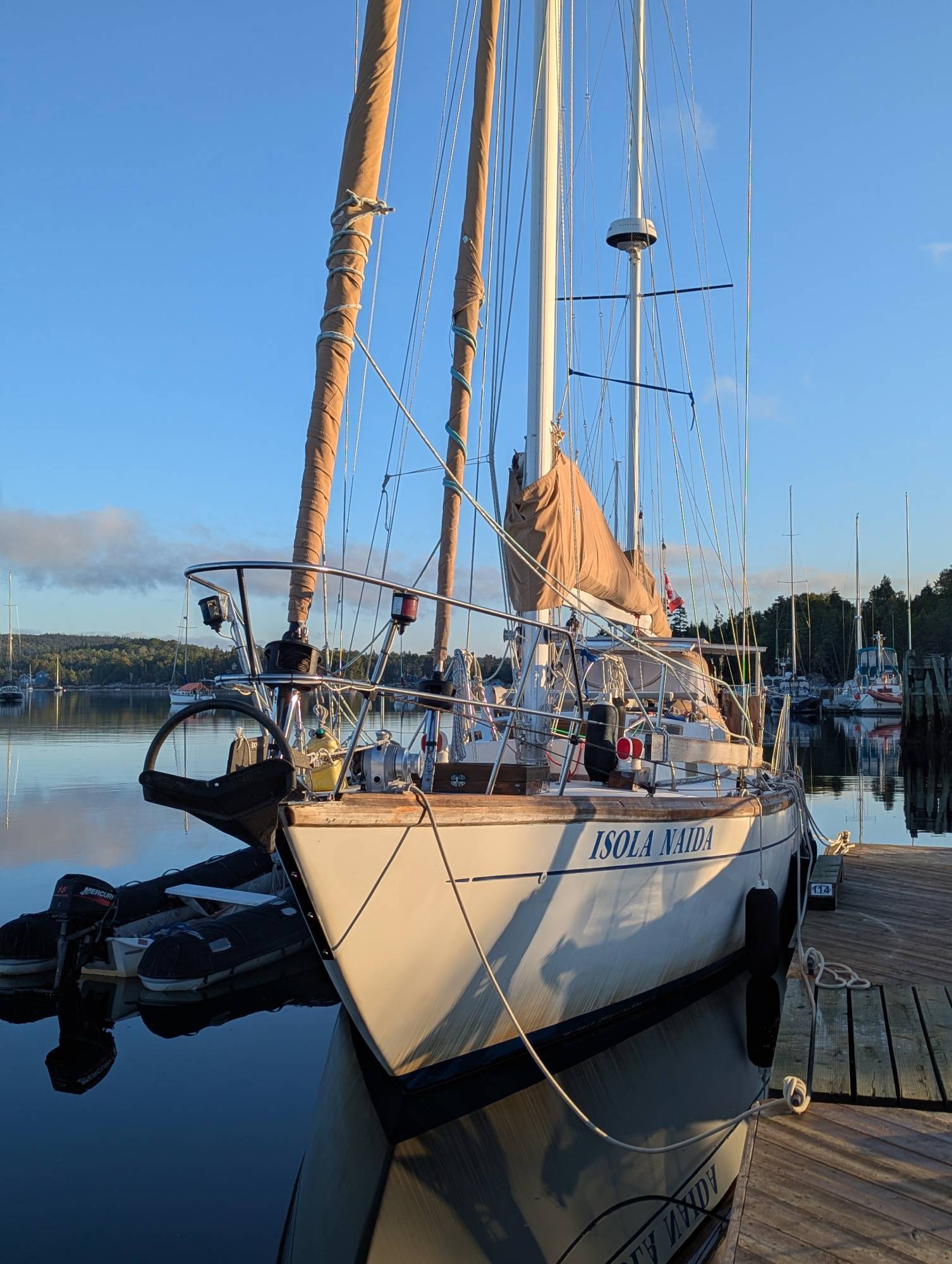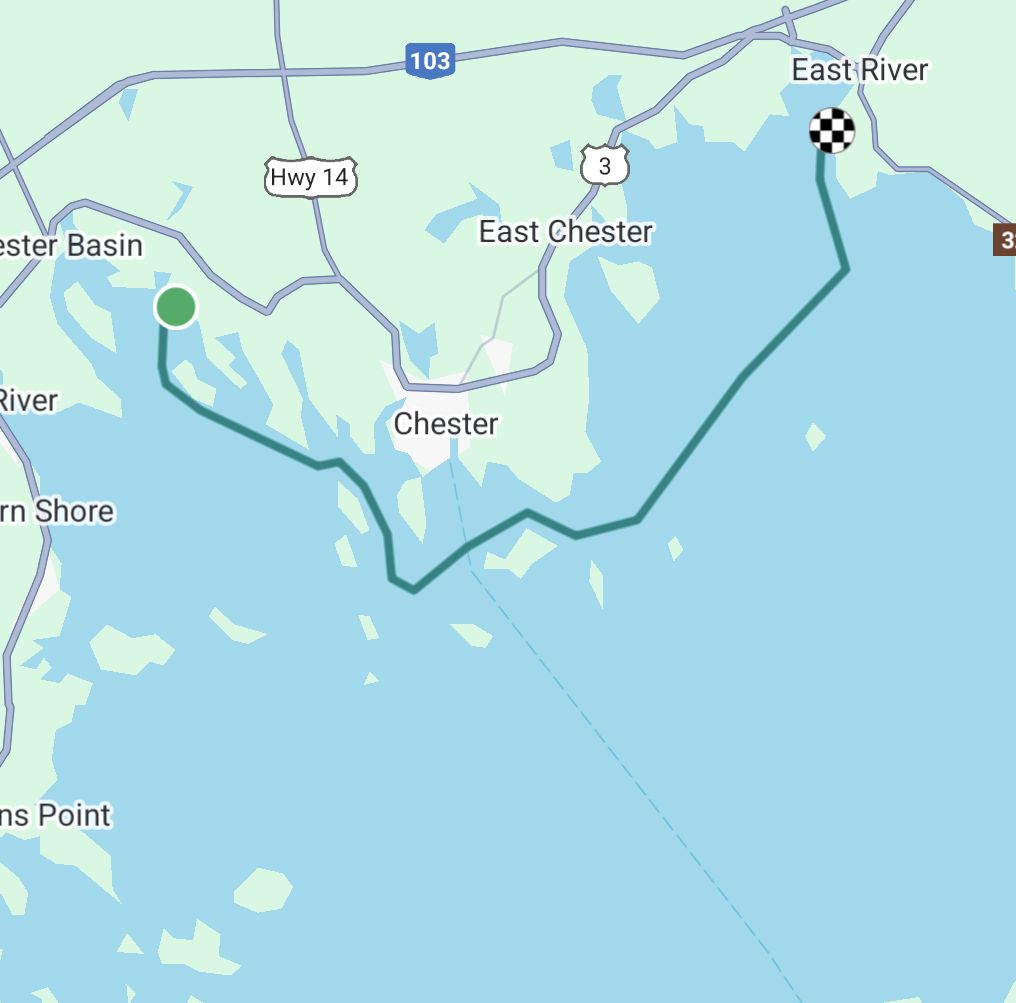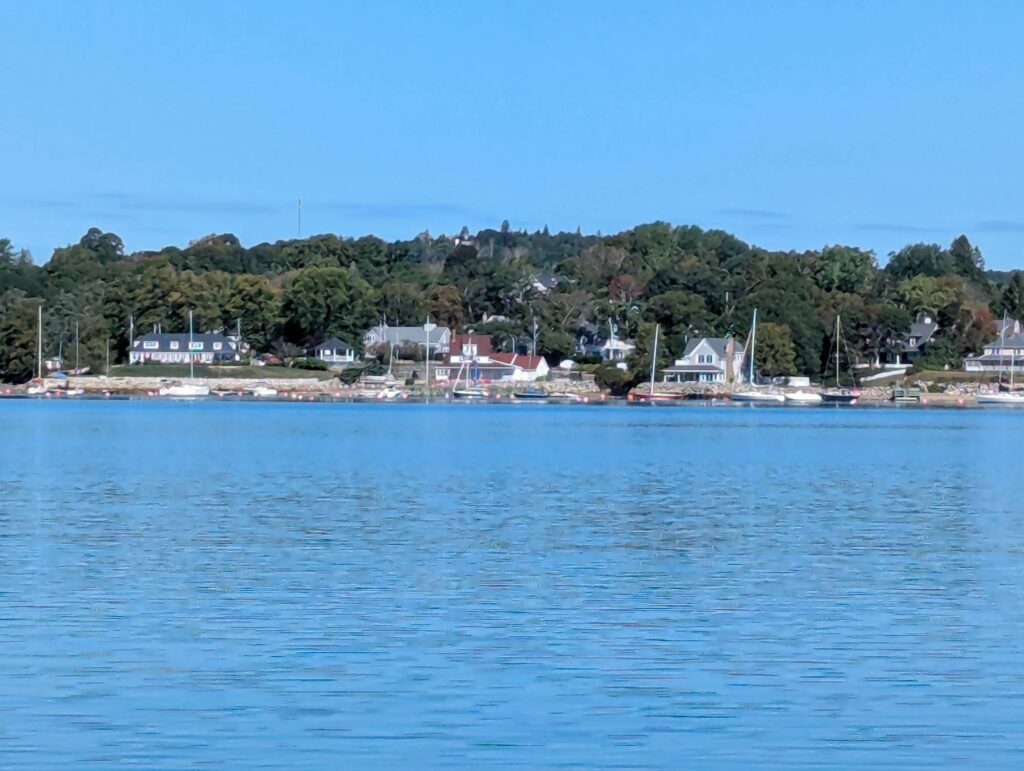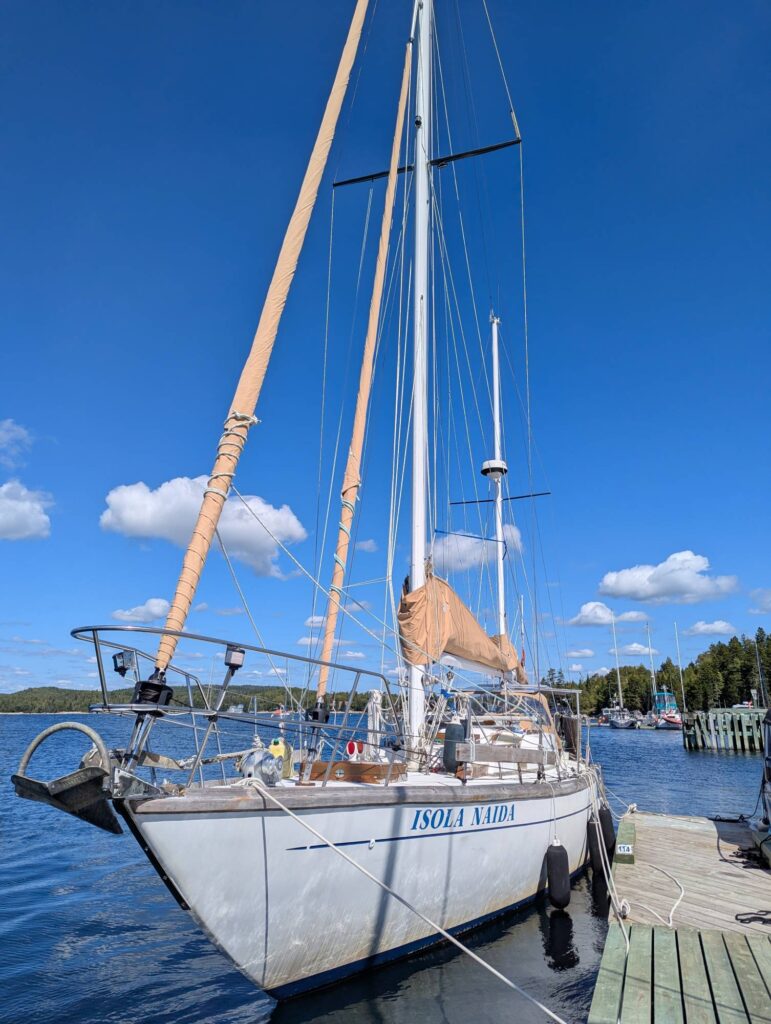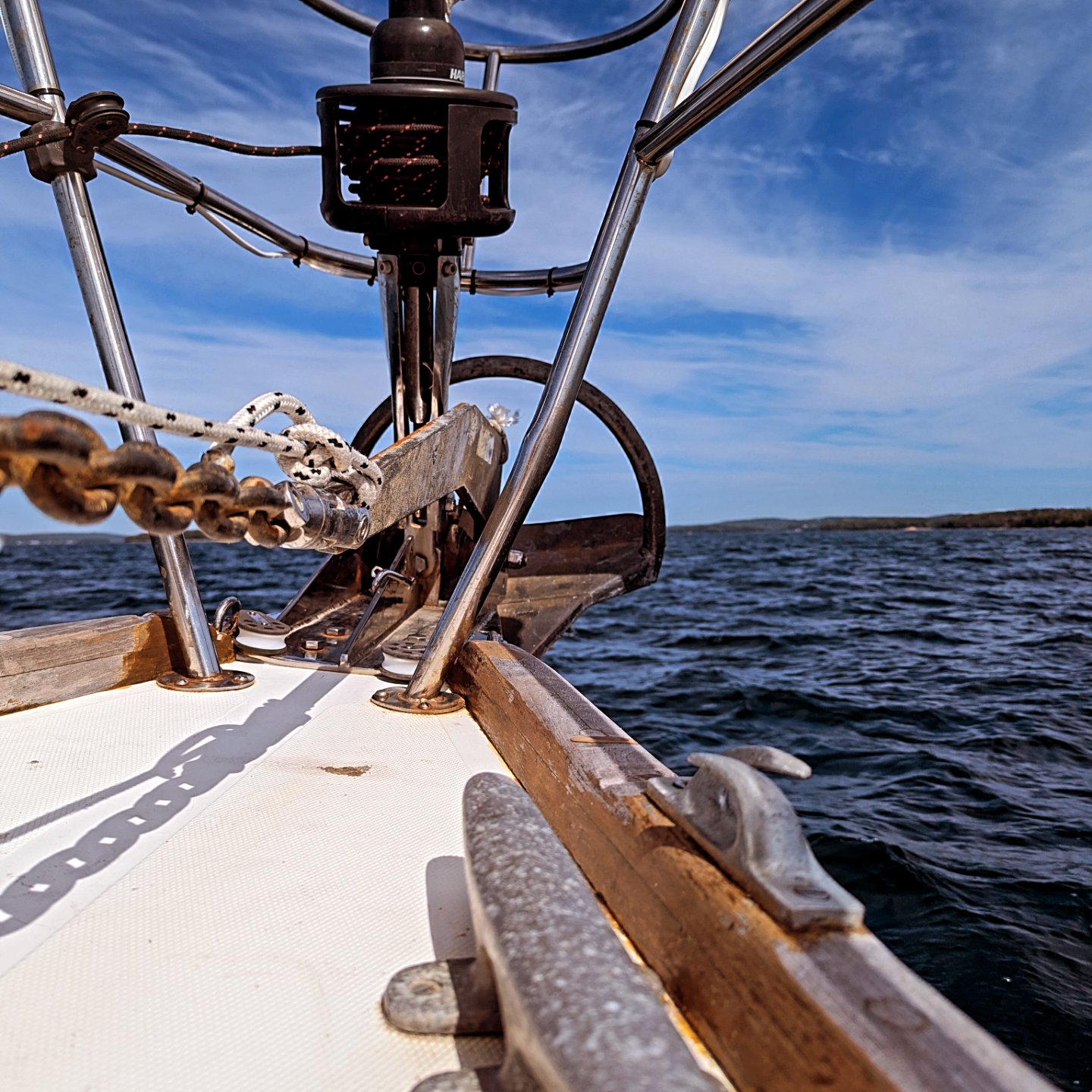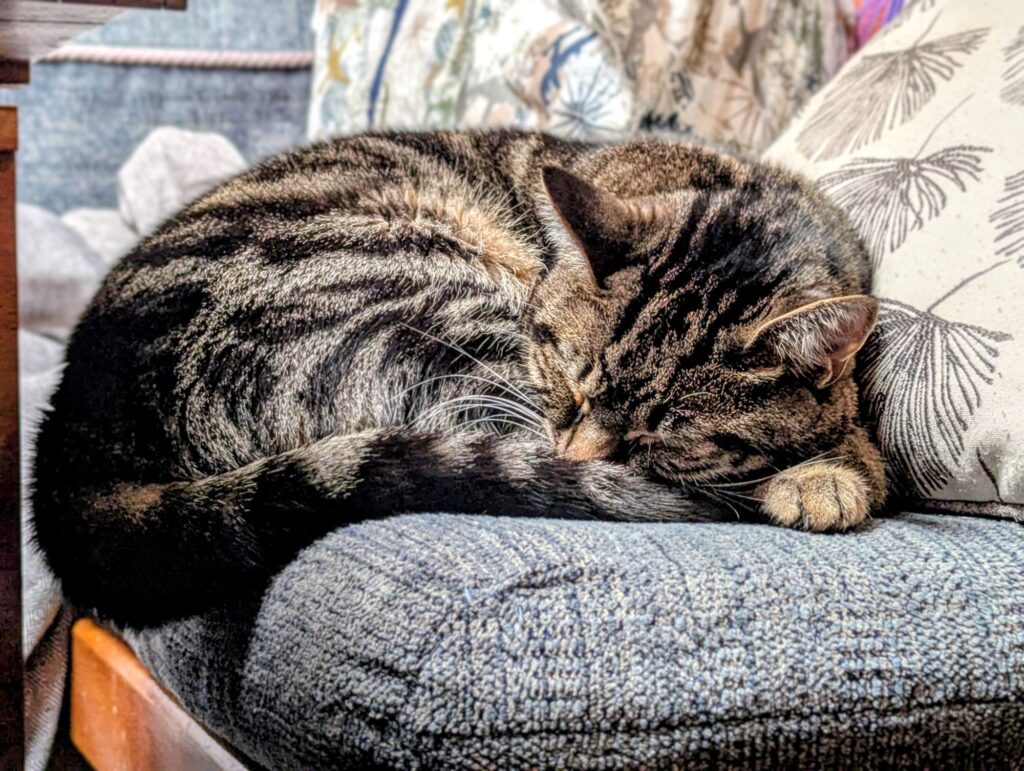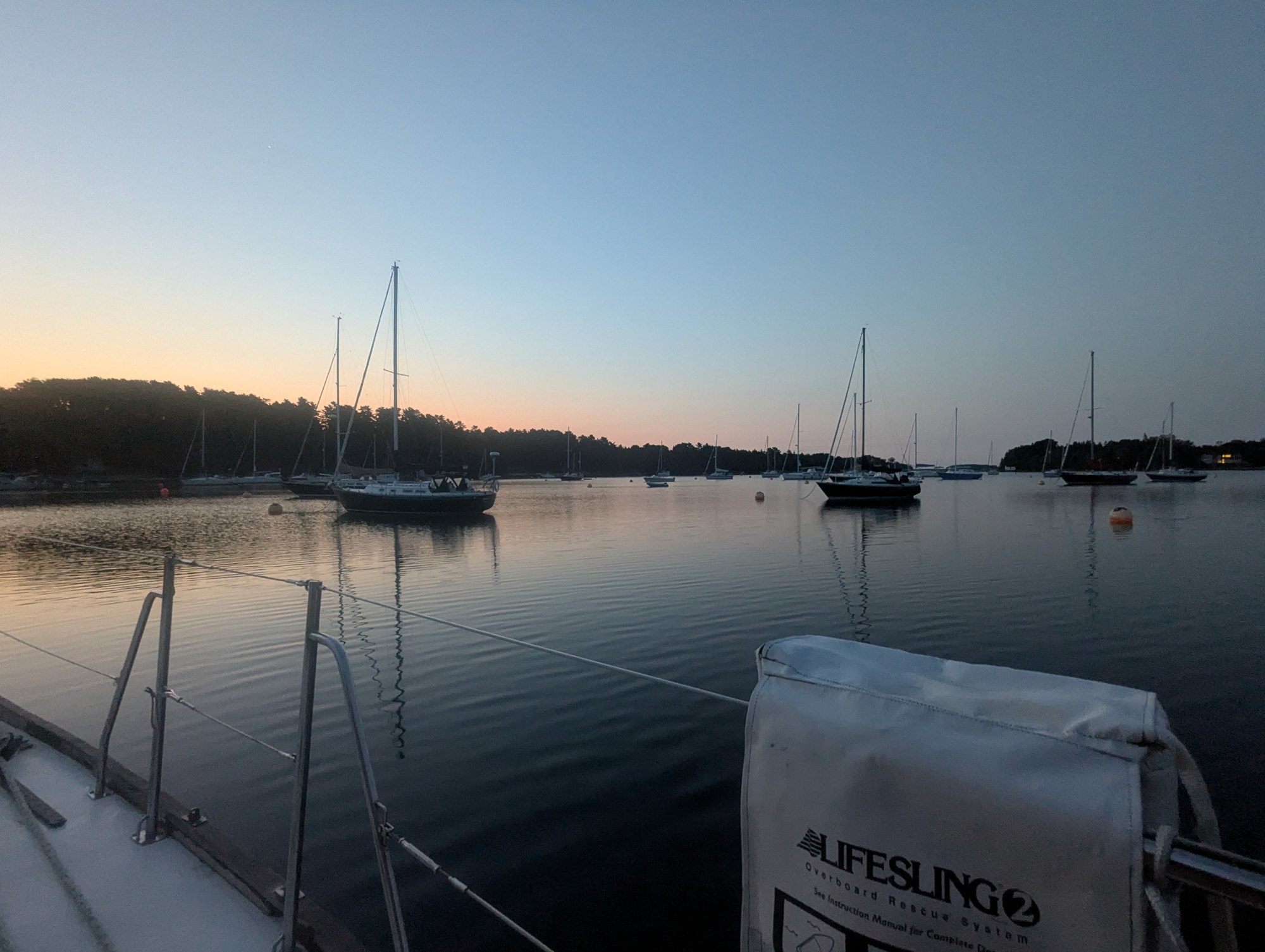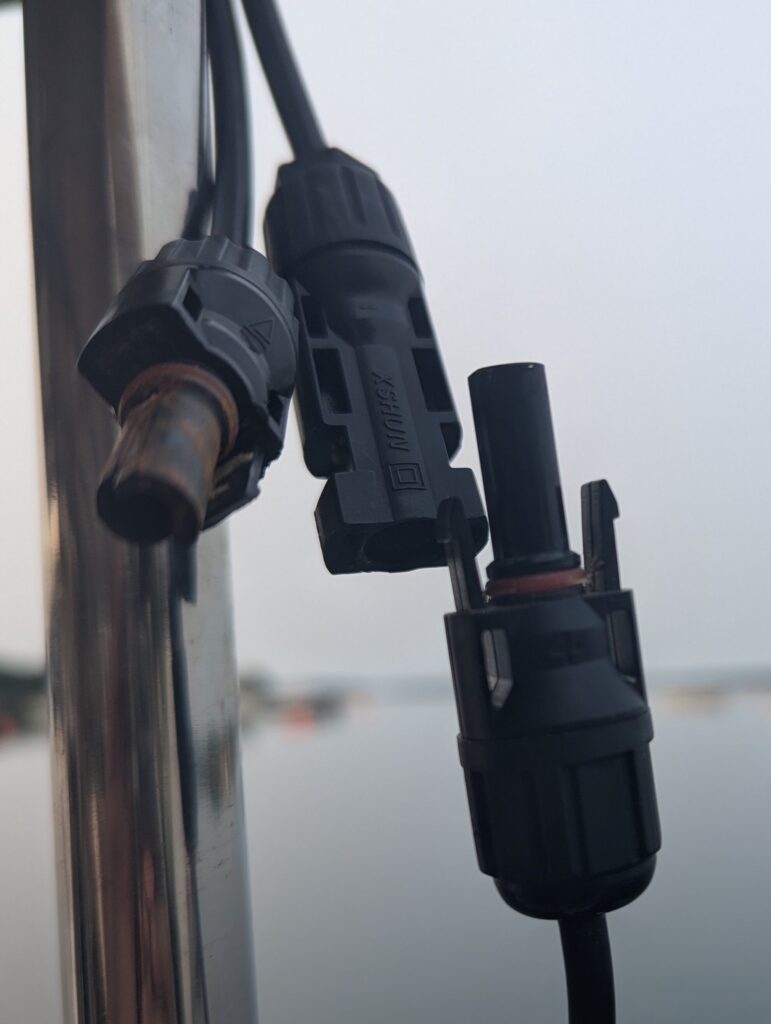Every haul-out marks a turning point in the sailing season, and this year was no exception for Isola Naida. After a busy summer on the water, we brought her to East River Shipyard to be hauled out, onto the hard for winter. What followed was a week of planning boat projects, uncovering the source of our tender’s persistent leaks, and receiving a message that connected us to Isola Naida’s very first owner—an unexpected reminder of the stories carried within her hull.
Hauling Out
With Isola Naida tied up at East River Shipyard, it took a few days of planning before she was ready to haul out. The first job was dropping her furler headsails. D’Arcy managed to remove both on his own. The staysail came down easily in a light breeze, but the genoa required a completely calm day. By Friday afternoon, 19 September, we were finally on the schedule for haul-out.
D’Arcy, Matt, and another shipyard crew member, Chris, worked together to get Isola Naida off the dock and into the travel lift well. The winds had picked up out of the north-northwest, pushing us back against the dock. The cockpit curtains acted like sails, making it even harder to maneuver under power. With some careful fending-off, we managed to push her back, reverse into the wind, then power forward into the larger of the two wells. Because of our forestay furler, the yard opted to use the bigger lift to avoid clearance issues.
We decided to secure on the windward side of the well. It was trickier, since the wind was blowing directly across the entrance, but this way we could tie her securely to the wharf and center her under the lift without staying aboard, otherwise we’d be pulling all 29,000 pounds of her off the leeward wall.
With the straps carefully positioned and secured around her full keel, Isola Naida was slowly raised out of the ocean. Her bottom was in good shape, with growth mostly clustered around the rudder and keel. We didn’t have time to pressure wash her right away, so that will be a job for later while she rests in her stands.
From there, the travel lift rolled her ashore, where she was transferred onto a large trailer for the slow, steady climb up the hill to the storage yard. Once in position, we worked with the yard crew to set her keel blocks, place her stands, and secure her for the winter.
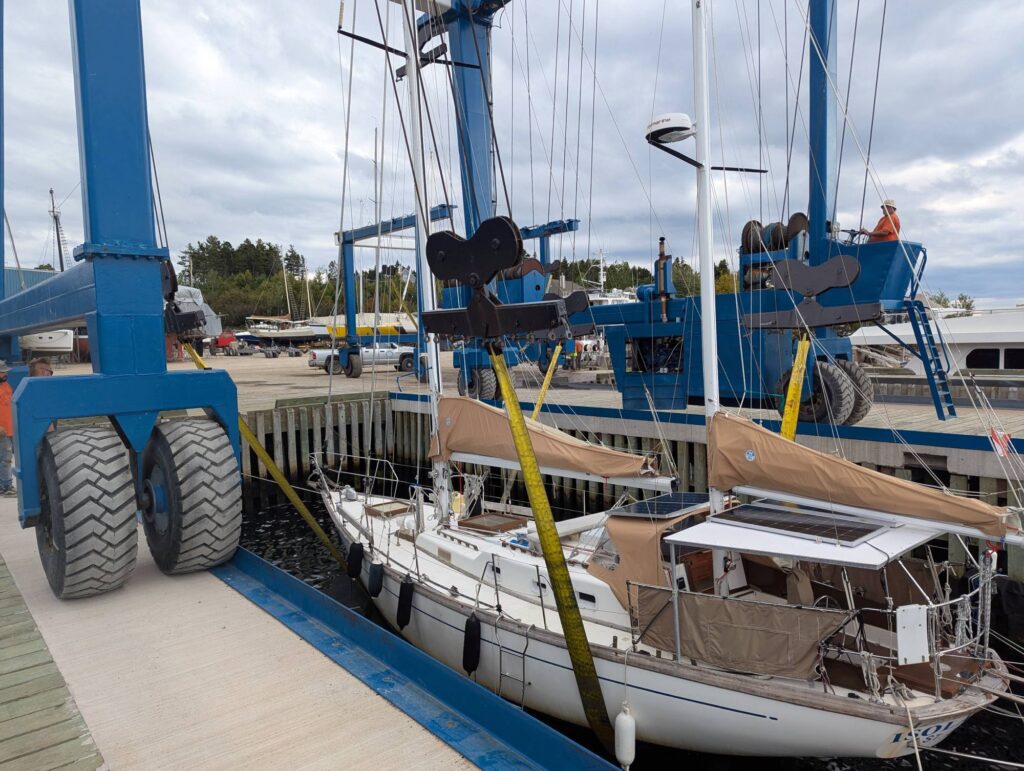
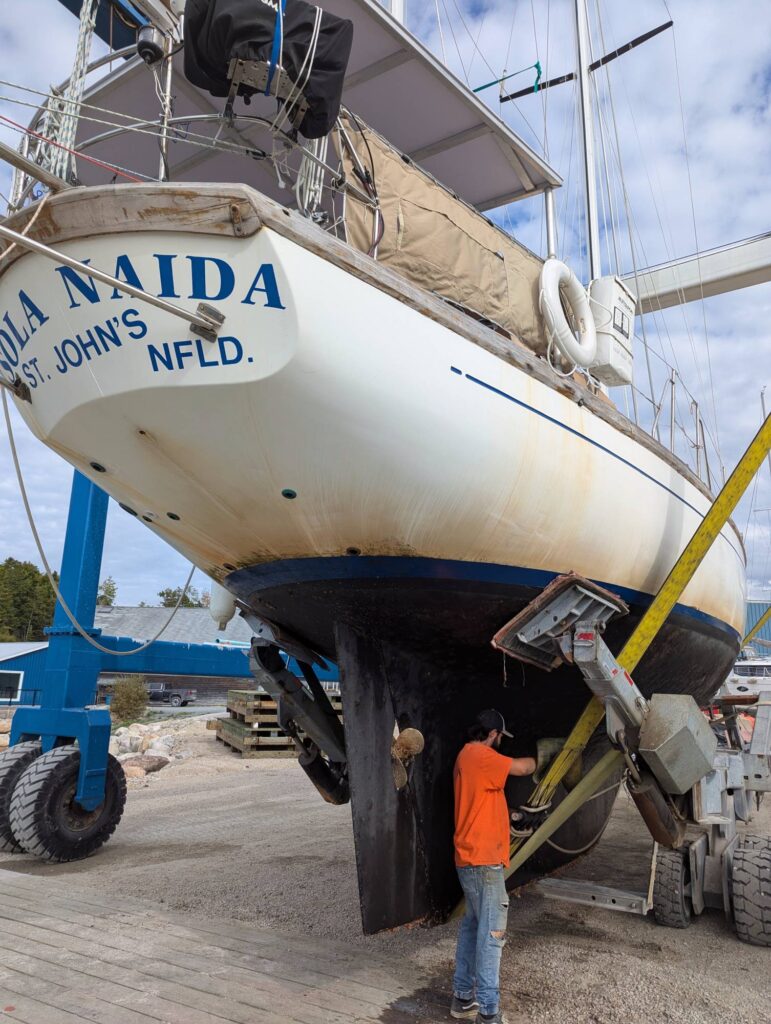
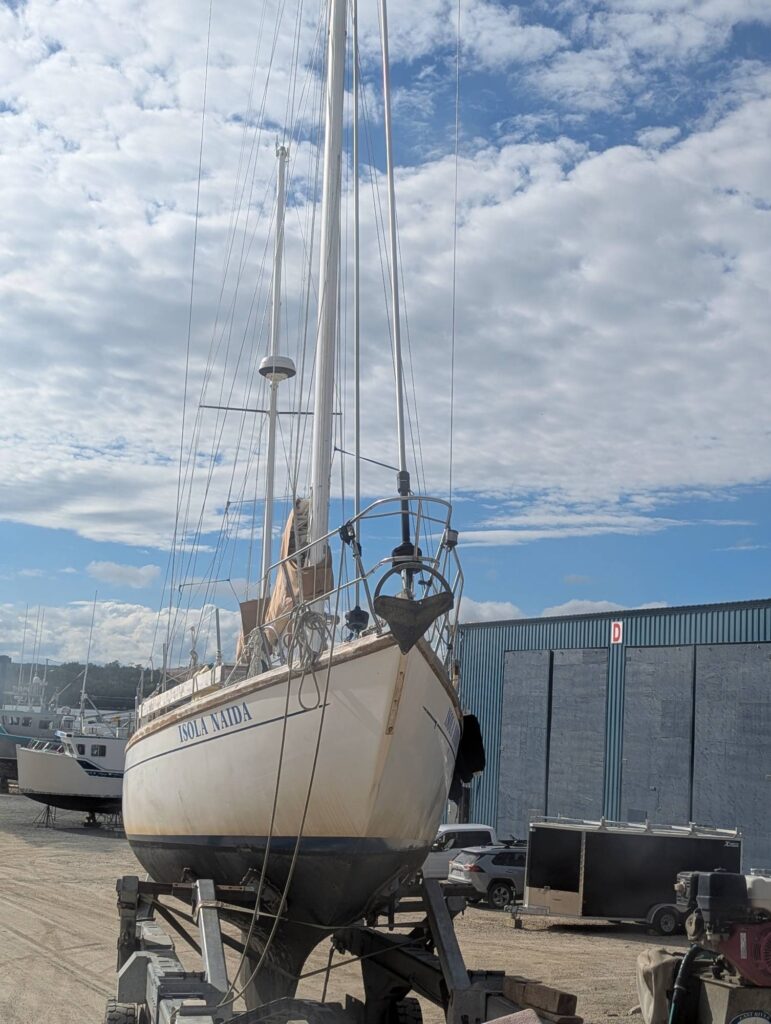
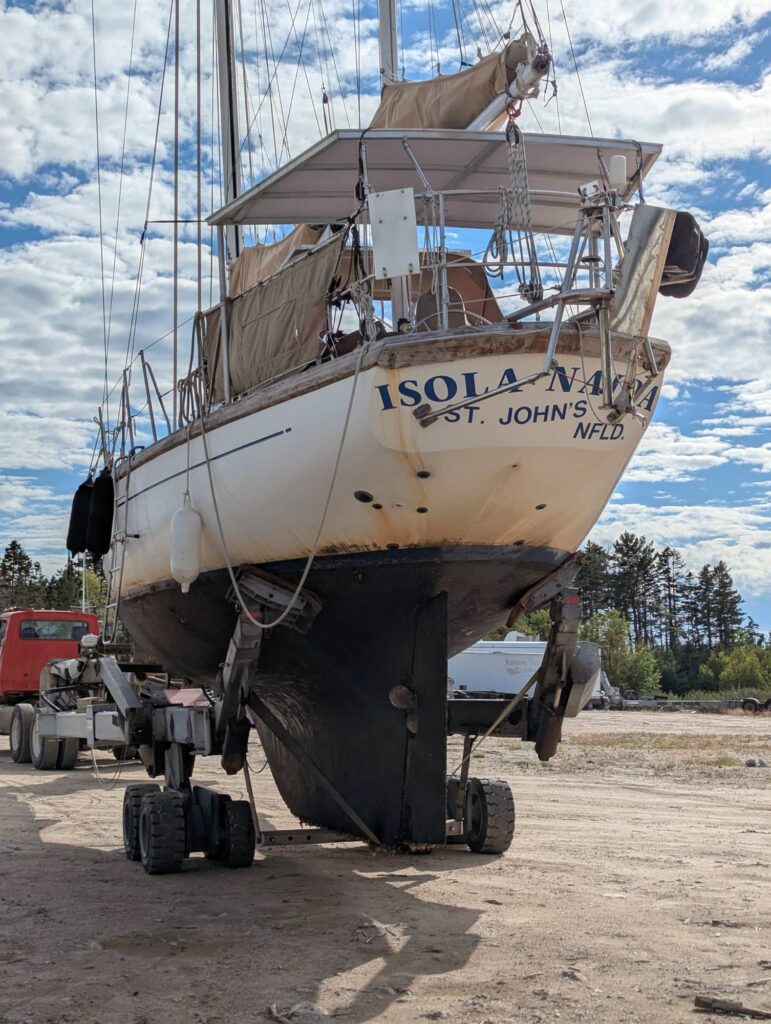
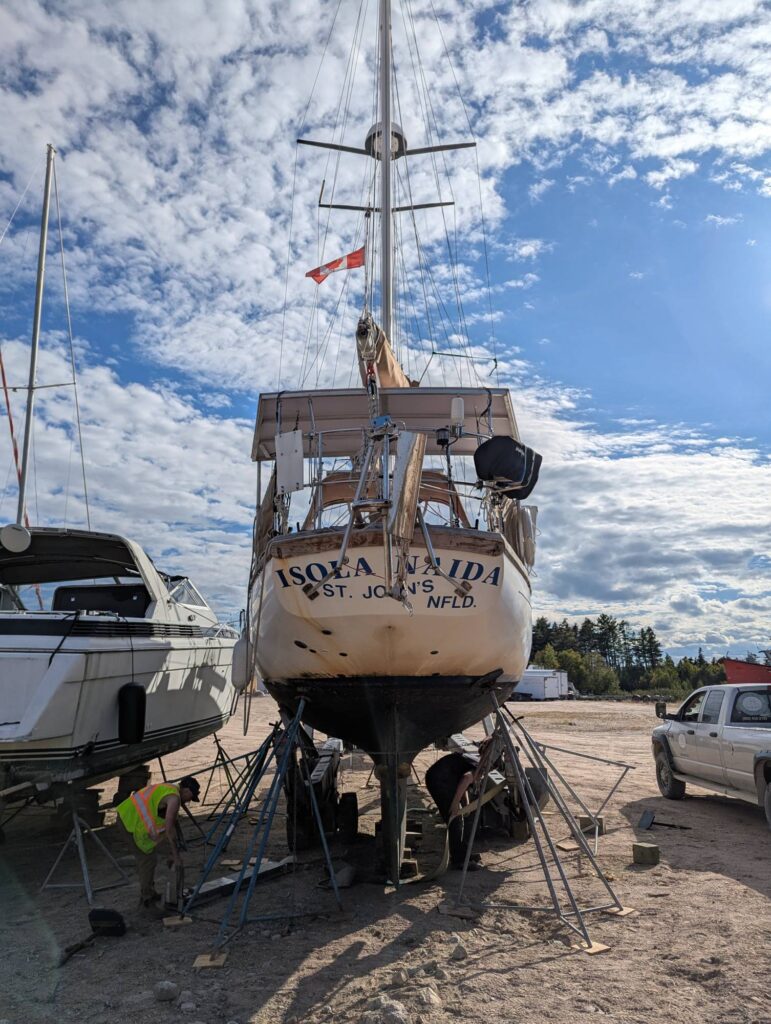
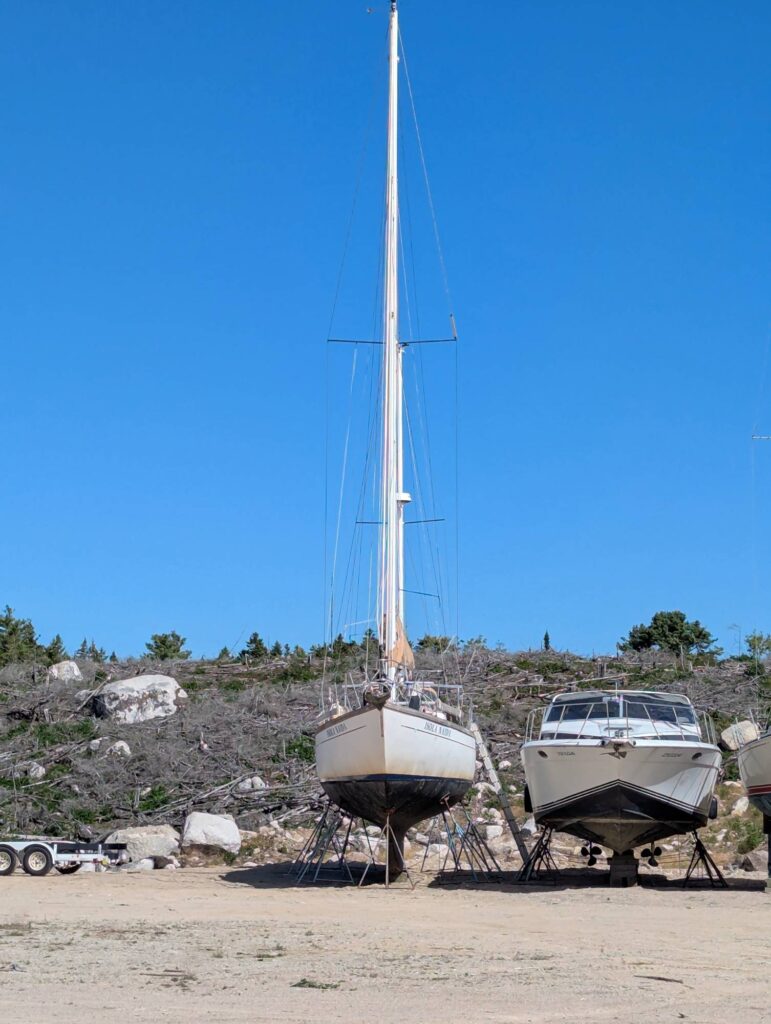
With Isola Naida finally on the hard, we can turn our focus to winter refit plans and the long list of boat projects waiting to be tackled.
Tender Care
One of the first projects is our RHIB tender. Two of her three sponsons have slow leaks, meaning we’ve had to reinflate her every single time we head out. Step one was removing the custom navy-blue cover made by the previous owners. While it offered good sun protection, it was showing its age and won’t be salvageable.
With the cover off, D’Arcy inspected all of the seams and joints along the PVC tubes. The material is weathered, but in decent shape – no major tears, just a few abrasions to reinforce, plus an oarlock that needs to be reattached. To hunt for leaks, we mixed dish soap and water in a spray bottle and coated the tender. Surprisingly, none of the seams or abrasions were leaking. Instead, we discovered a fine slice in the starboard bow tube, plus several pinhole punctures along the bow and starboard side. The culprit? Almost certainly Isola Naida’s boarding ladder.
Now that we’ve located the leaks, we’ll be ordering PVC fabric to patch the problem areas. We also plan to reinforce a few stress points to prevent future punctures. More on that process will be coming in a future post.
A Surprising Message
This past week, we received a message through Instagram that stopped us in our tracks. The sender’s last name was immediately familiar: Hochwald. It turned out to be Mike Hochwald, son of Ulrich Hochwald. Ulrich was the very first owner of Isola Naida, and the man who built her from a bare hull.
Mike shared pieces of her early history with us. Ulrich ordered the hull from Reliance Sailing Craft Co., Ltd. in Montreal in 1975 while the family was living in Thunder Bay, Ontario. In 1976, once completed, the hull was shipped to their home in Manuels, Conception Bay South, Newfoundland. Her diesel engine, purchased from one of the local Indigenous bands near Thunder Bay, was loaded into the back of their Chevy van for the move east.
For the next eight and a half years, Ulrich worked on Isola Naida in the backyard of the family home. Mike even recalled the winter of 1983, when an ice storm knocked out power. That night, dinner was cooked on Isola Naida’s diesel stove, lit by the glow of kerosene lamps.
Mike has kindly offered to share more of her history with us, which we’re eager to learn. Since we’ve been planning a passage to Newfoundland as part of our steps to crossing the Atlantic, the thought of meeting Ulrich in person someday makes this story even more special.
An Invigorating Week
From hauling out and tackling boat projects, to uncovering a piece of our Isola Naida’s past, this week has been full of reminders of how much story Isola Naida carries with her.
Have you ever dsicovered a surprising piece of history of something you owned? A boat, a house, or something else? Tell us about it in the comments below!
If you’re curious to follow along with our winter refit and Isola Naida’s unfolding story, make sure you’re subscribed so you don’t miss what’s next. Follow us on Instagram, Facebook, and Youtube for more!

